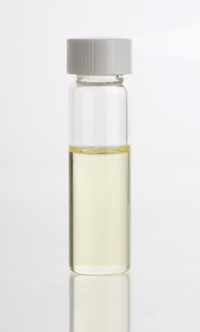
Photo from wikipedia
The genus Ocimum (Labiatae) comprises 30 species found in tropical and subtropical regions of the planet, of which species O. basilicum L. and O. gratissimum are widely used in food… Click to show full abstract
The genus Ocimum (Labiatae) comprises 30 species found in tropical and subtropical regions of the planet, of which species O. basilicum L. and O. gratissimum are widely used in food and traditional medicine. Phytochemical studies on Ocimum have revealed a number of essential oil chemotypes, for example, eugenol, methyl chavicol, linalool, and methyl cinnamate. Since essential oils are commercially assessed according to their content, the aim of this study was to develop a simple and precise method for their qualitative and quantitative analysis using NMR spectroscopy combined with chemometrics. Seven essential oils from different species of Ocimum, an unknown sample, and a commercial sample were evaluated and the results compared to those from established and precise GC-MS and GC-FID methods. Chemometric evaluation from both 1H NMR and GC-MS data revealed three chemotypes: eugenol for O. gratissimum, O. micranthum, and O. tenuiflorum; estragole for O. basilicum, O. basilicum var. purpuracens, and O. selloi; and methyl cinnamate for O. americanum. The unknown and commercial species were classified as cinnamate and eugenol chemotypes, respectively. Despite the corroborating results, the chemometric analysis revealed the higher robustness (better adjustment) of the 1H NMR model compared to the GC-MS method in terms of certain statistical parameters. The 1H NMR method allows for the detection and quantification of organic compounds in a complex mixture without the need for certified standard compounds. Although GC-MS and GC-FID were able to detect five compounds not observed by NMR spectroscopy, the four most important metabolites (eugenol, estragole, methyl cinnamate, and eucalyptol) were more readily detected and quantified by 1H NMR.
Journal Title: Talanta
Year Published: 2018
Link to full text (if available)
Share on Social Media: Sign Up to like & get
recommendations!